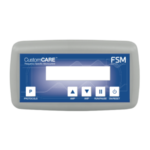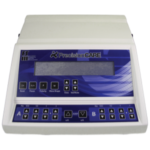Frequency Specific Microcurrent
Striving To Be Toronto's Best Osteopathy And Massage Therapy clinic
Frequency Specific Microcurrent (FSM) In Toronto
We are one of the few clinics that offer Frequency Specific Microcurrent (FSM) sessions in Toronto. Very low electric current applied to specific tissues in your body using frequency specific microcurrent machine in order to help with pain caused by injuries or medical conditions.
What is Frequency Specific Microcurrent?
Frequency Specific Microcurrent is a modality that uses electrical stimulation to heal tissue. Physiotherapists and other health practitioners have used similar, less refined methods for decades. The ability to adjust the frequency is what makes FSM so much more effective.
Inflammation is the body’s natural response to an injury or infection. However, too much of it can cause additional harm to the body after a sprain, fracture or wound. We know to apply ice immediately after an acute injury to lessen swelling and thus reduce the damage to surrounding soft tissue. FSM does, even more, to control inflammation and shorten the length of time needed to heal.
Benefits of FSM
Frequency Specific Microcurrent (FSM) helps reduce inflammation to eliminate pain and aid in the healing of an acute injury or after an operative procedure. It accelerates healing of acute injuries up to 200%.
- Improves oxygenation and cellular repair (Oxygen is vital for healing wounds. Adequate wound tissue oxygenation can trigger healing responses.)
- Decreases cellular electrical resistance
- Reduces inflammatory chemicals in tissues
- Increases feel-good endorphin levels
- Increases cell energy (ATP) levels by up to 500%, microcurrent increases the ATP (Energy) production in the cells of your body and in doing so, dramatically increases the tissue’s healing rate
- Boosts protein synthesis by 70%
- Restores adrenal function
- Repairs regulation of nerve tissue
- Boosts immune function
- Improves cellular function
- Softens tight tissues
- Emotional release
- Pain Relief
- Reduction of muscle spasms
- Increases blood circulation to injured areas
- Maintains and/or increases range of motion to injured areas


